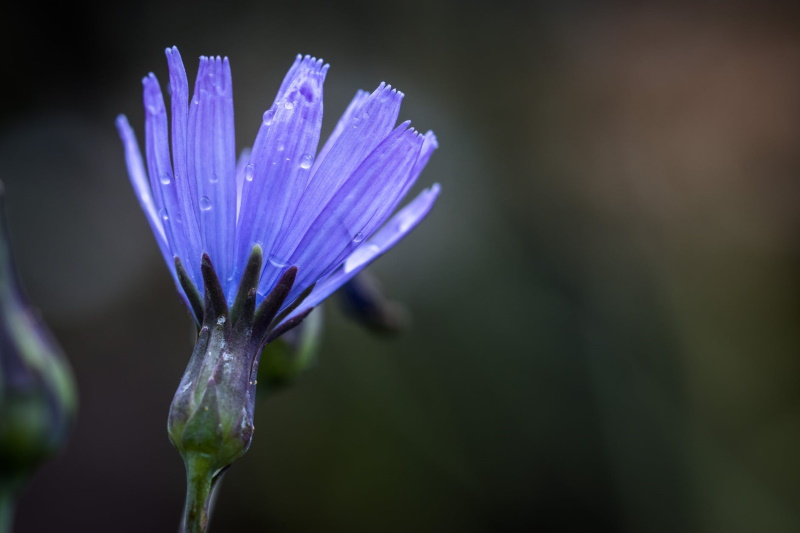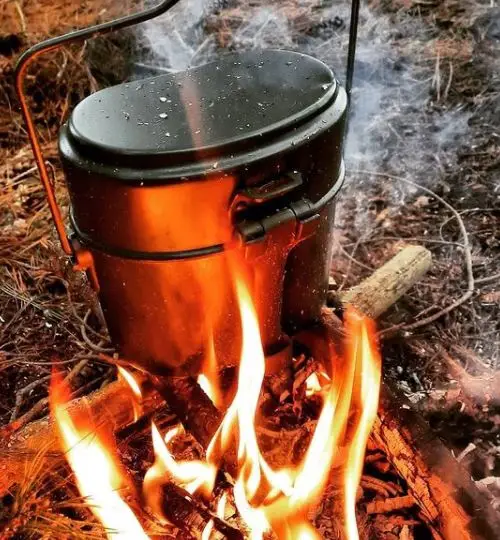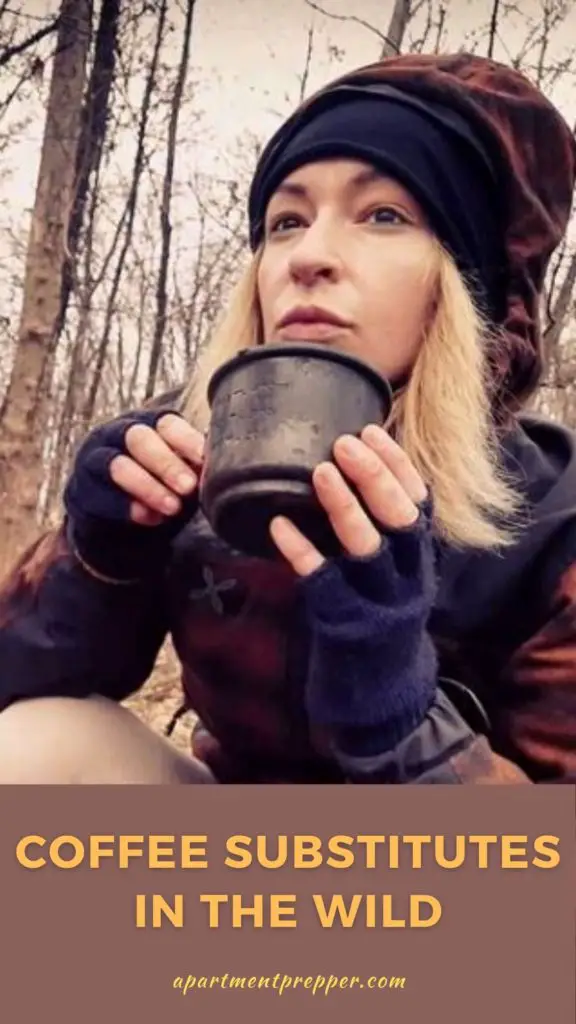by Kyt Lyn Walken
Introduction
We need the tonic of wildness…At the same time that we are earnest to explore and learn all things, we require that all things be mysterious and unexplorable, that land and sea be indefinitely wild, unsurveyed and unfathomed by us because unfathomable. We can never have enough of nature.”
Henry David Thoreau
One of the most pleasant aspects of being in the Great Outdoors consists of those precious and peaceful moments connected to the life around campfire.
Watching the campfire itself, “the television of the woods” (quoting Survival Instructor and Expert Dave Canterbury) give us relief and comfort, not to mention food is even more tasteful when you’re out in the wilderness. It has a lot to do with authenticity.
If we turn these moments into a survival perspective, the power of these simple acts acquires a brand new meaning.
But when temperatures are miserable, and the elements unleash their fury on you, there’s very little you can still do to get some relief.
A campfire still offers you the chance.
Something hot to drink is a nice comfort.
But what if you run out of coffee?
In this article we will see how and where we can produce coffee ourselves in a SHTF scenario.
Brief history of coffee
“Coffee – the favorite drink of the civilized world.”-
Thomas Jefferson
The origins of the drink itself are still uncertain. It seems that cultivation of coffee actually began within the Arabic Peninsula.
The Europeans discovered it back to 17th Century and they started to trade it to the Old Continent.
The success of the new drink was immediate and long lasting. Everyone started to consume it on daily basis. Coffee grains arrived in America with expeditions, thanks to missionaries and travelers. New plantations were set up, and others came in the following decades.
Benefits of coffee
“I never drink coffee at lunch. I find it keeps me awake for the afternoon.”
Ronald Reagan
Due to the presence of high levels of antioxidants and beneficial nutrients, coffee still hits the top of the polls related to the most enjoyable – and healthy drinks.
Some researched have demonstrated that coffee lovers experience a sensible lower risk connected to several serious diseases.
But coffee has a lot more of pros. Let’s lift the lid on them.
1. It helps you to burn fats
2. It keeps your mind and body active for a considerable amount of time
3. It gives you constant energy
4. It improves your daily life, helping you to stay fit and being productive
5. It contains some important vitamins like Magnesium and niacin (B3), Panthotenic Acid (B5) and Riboflavin (B2)
6. It keeps diabetes risk low
7. It keeps Alzheimer, Parkinson and senile dementia risk low
Beside these beenefits, its unique taste makes it into an enjoyable drink, either hot or cool served.
Having a cup of it at easy reach has become more than a trend in recent years!
How to get coffee substitutes from the great outdoors
“Coffee first. Schemes later.“
Leanna Renee Hieber
If you find yourself off-grid, the chances to get some warm drinks are drastically reduced to 1% unless you have already selected a location where to stockpile some provisions like water tanks, MRE, soluble coffee and so on.
Nevertheless, in the event you run out of your rations, you can still get substitutes for coffee out of the woods. It’ll be caffeine-free, to be honest, but still good enough to provide some nutrients and comfort.
Nice to hear, right?
The Great Outdoors, in fact, can be a perfect place where you can get what you need.
In case of woodland areas, the ground itself can be considered as a huge, endless and pretty rich marketplace where you can resort to when you need vitamins, mineral salts and so on.
And guess what… If you know where to look for you can also replenish your provisions by producing your own warm drink.
Well, it may taste not like real coffee, but it helps.
Our grandparents know it very well, as they used to produce it during WWII.
At that time, no coffee grains were available.
Let’s know look into how they made it.
On Self Sufficient Coffee
“Even bad coffee is better than no coffee at all.”
David Lynch
Back in the ’20s, ’30s and ’40s, getting a real coffee used to be a luxury.
Our grandparents had to replace it with something else.
Even if they are caffeine-free, coffee substitutes are valuable replacements in terms of:
– energy provided
– taste
– vitamins (as mentioned in the previous paragraph)
– immediate availability
The last point, specifically, was the real thing. As a matter of fact, our ancestors started to produce a surrogate of coffee which has been lately defined “self sufficient coffee”, starting from easy to identify and to collect herbs like dandelion and chicory.
They found them appropriate and also convenient to beat down dismay and fatigue.
Our grandparents’ efforts, additionally, were in line with the ongoing government at that time, which favored the trade of national products.
Did those surrogates taste like real coffee?
To be honest, not really! But they sufficed as alternative coffee drinks.
Some examples of self sufficient coffee are:
figs coffee
chicory coffee
grilled beans coffee
rye coffee
wheat coffee
dandelion coffee
beeches’ acorns’ coffee
Even tea had its own surrogate. It was called “carcade tea,” also known as hibiscus tea.
The first chicory coffee company was established in Germany in 1760.
In 1846, the German Custom counted 3475 chicory coffee company. This kind of surrogate was known as “Frank Kaffee“.
Compared to other resources, with figs being the main ingredient, the fig coffee was very tasty. It wasn’t consumed pure as it was mingled with some other substitutes. Fig coffee was dark, intense, sweet.
In 1918, the Austrian Government approved an ordinance promoting the extensive trade of surrogates of coffee. The ordinance mentioned barley, figs, rye, lupins (but they need to be “dearomatized”) and acorns as prime ingredients.
One of the most famous surrogates happened to be the “Bauern Kaffee” (Coffee of the farmer) and “Ruggenmaltzkaffee”, made out of maltus and rye. This coffee, tasty and very sweet, became soon popular among the population.
How to make coffee substitute drinks
Coffee substitutes have recently come back in style. They are sold at expensive prices and they are considered fancy drinks. At organic shops you can buy several of them.
It’s a good idea to try them first before attempting to produce them by yourself.
I personally saw them on sale at Wholefoods and Natural Groceries when I was in Texas.
Besides that, producing them on your own is surely the best – and most “Prepping Style”! – way to go.

Chicory
Ground roasted chicory root (Cichorium intybus) has been used in the southern U.S. as a coffee alternative for a very long time. If was widely used during the Civil War and is still popular in New Orleans where chicory is mixed with coffee. The chicory and coffee combination is also popular in South India.
These plants grow in wide open prairies that get direct sunlight. Chicory is a perennial plant.
Dandelion
Dandelion is very common and easy to identify. In the same manner, it can be found in many areas, including some suburban areas.

Acorns
You can gather acorns in beech and oak forests.
Barley, rye, wheat
Postum, a popular drink during World War II, was an instant coffee substitute made from cultivated crops such as wheat, wheat bran, molasses and maltodextrin from corn. It is still available today and is marketed as a caffeine free coffee substitute.
Figs
Fig trees usually grow well everywhere. Their capacity to adapt is, in fact, remarkable.
Be accustomed to scout as much as possible an area and map it with a list of your findings.
By this you will surely save time and fatigue for the time to come.
Short guide on how to make self sufficient coffee
“Coffee is a way of stealing time that should by rights belong to your older self.”
― Terry Pratchett
Chicory or Dandelion coffee
Beside the difference between the two plants, the procedure happens to be the very same.
Once foraged, cut off the roots and wash them carefully in order to remove any pesticides and pollution.
Use your knife also to mince the roots in small pieces. Lay the pieces on a grill over your flame such as a campfire in order to roast them. When they turned golden brown, let them cool down. Now you should be able to shred them with your (clean!) hands. Once you have obtained a rough powder, add at least three spoons of it to a mug of hot water (8-12 oz).
In case of figs, you need to let fruits dry. Cut the figs in small parts, and roast them on the grill. Once they have reached a brown color, let them cool down. As above, use your clean hands to reduce them to a powder. Three spoonfuls are sufficient for a 12 oz of hot water.

Bear in mind to save some dried figs: they taste excellent even as a dessert.
Acorns from beeches and oaks need to be stored in dry place and treat as roots. You can roast them in the same way as for dandelion, chicory and figs. Once cooled, proceed to shred or grind them until you get a powder. Again, three spoons are enough for a 12 oz mug. You can use it to produce bread too or add it to some soups.
Conclusions
“As long as there was coffee in the world, how bad could things be?”
― Cassandra Clare
Keep in mind to preserve and maintained roots, fruits and seeds always at the right level of:
– temperature
– humidity
and away from the reach of animals. Bears, in fact, may be intrigued by figs. You should obtain several types of prime materials to get coffee substitutes. Don’t over exploit an area and if possible, keep and update regularly a journal on the quantity of ingredients you collected and record your results.
And eventually.. enjoy!
About the author:
Kyt Lyn Walken is Official Representative and Instructor for Hull’s Tracking School (Virginia) and Antipoaching Certified Ranger for Conservation Rangers Operations Worldwide Inc. (Colorado).
She’s a long time Prepper and Survavilist and she wrote several articles and essays on this topic.
We are an affiliate of Amazon.com, which means we received a small commission if you click through one of our Amazon links when you shop, at totally no cost to you. This helps keep the lights on at the blog. Thanks!



2 comments